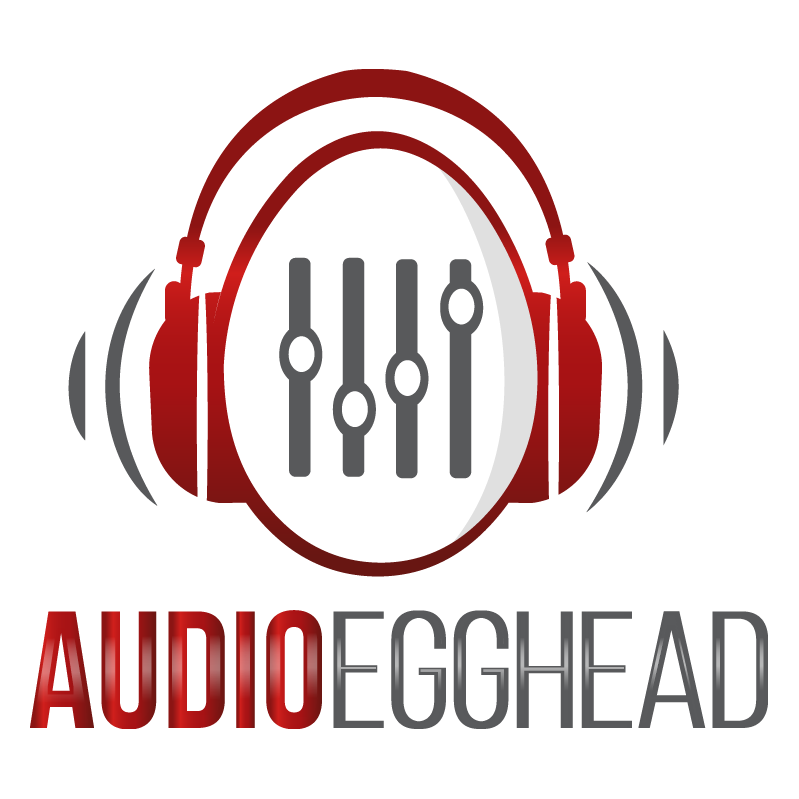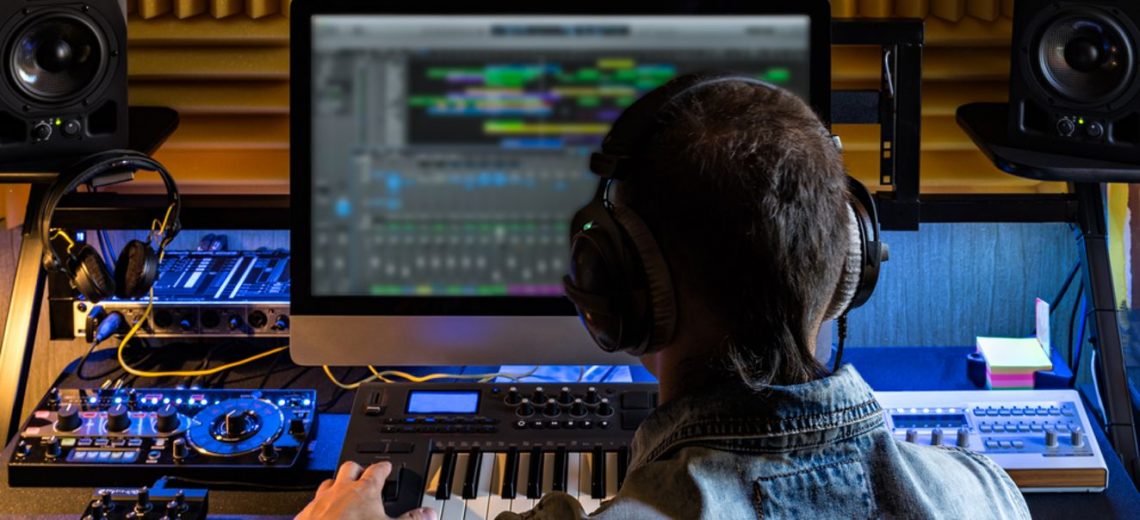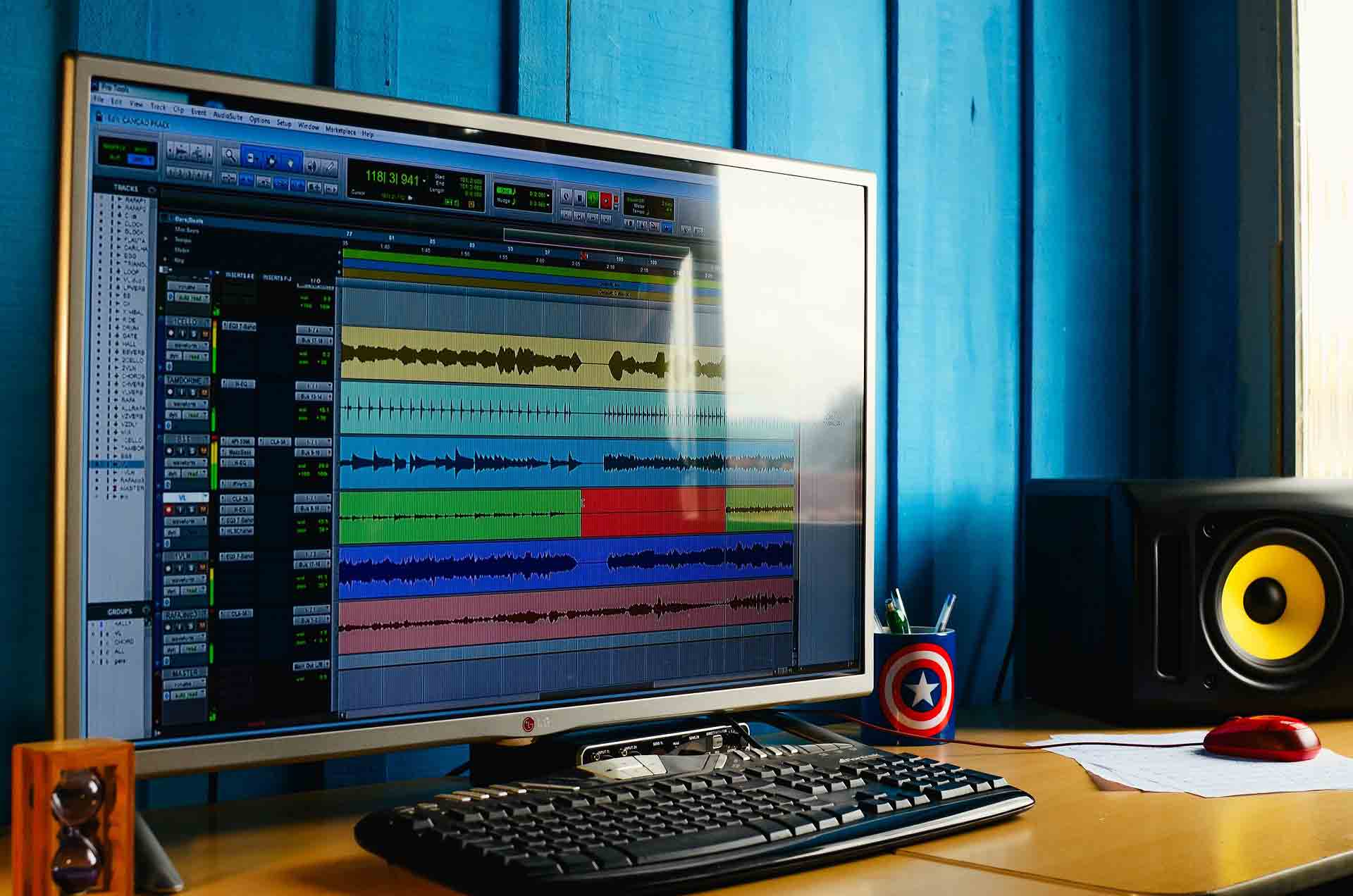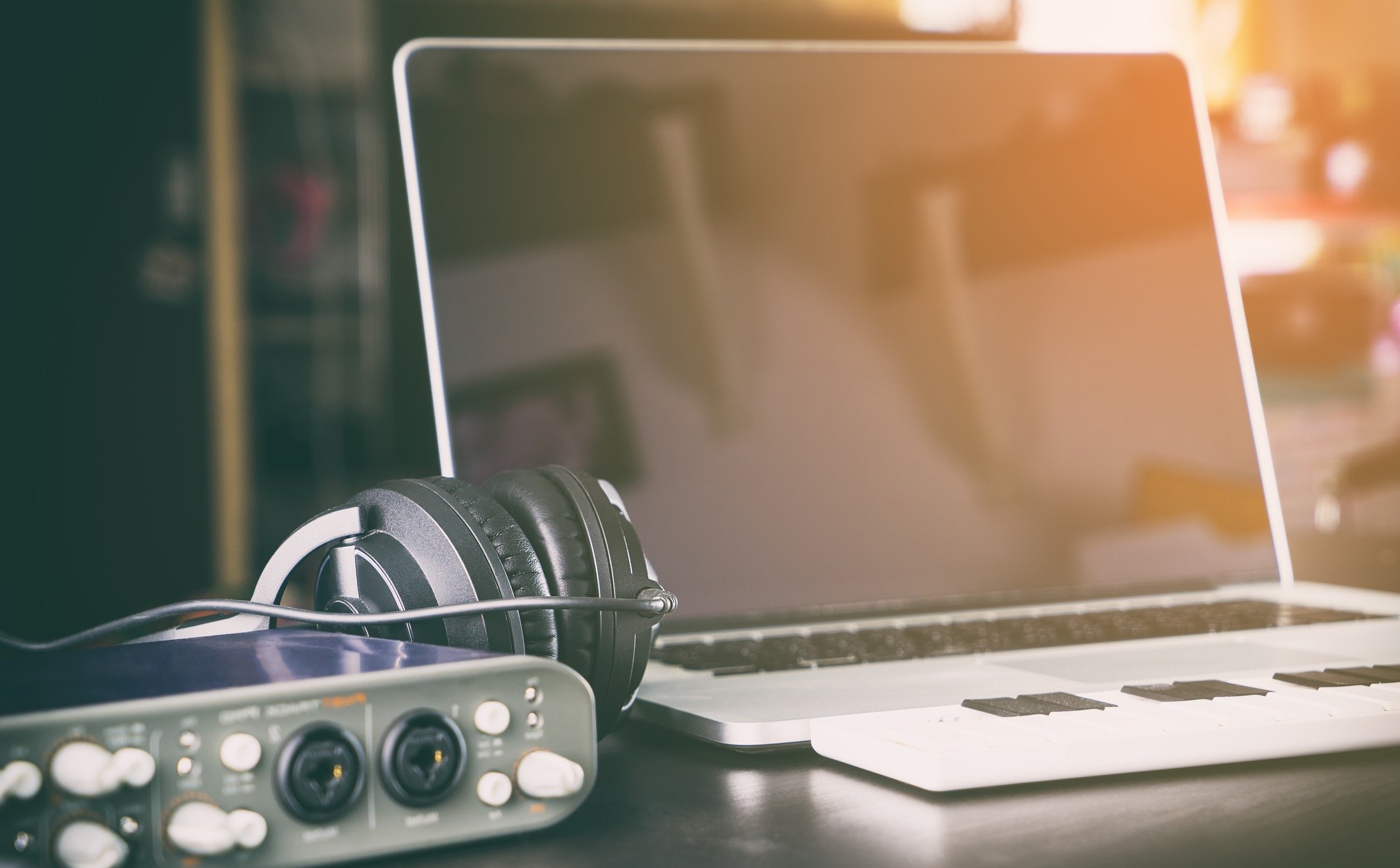When it comes to music production, a DAW (digital audio workstation) is one of the major choices you need to make at the beginning. Music producers become very attached to one system or another. People who have been making music for years will often have a laundry list of reasons why they prefer Studio One or Ableton Live, or why you should check out Reaper, or why their DAW is better for electronic music or hip-hop. But what is the best DAW for beginners?
In a hurry? In this article, we’ll look at these top contenders:
Digital Audio Workstations: The Basics

It’s Up To You
Let me begin by saying: although your DAW software does have an impact on your work, I would argue it’s easy to give it too much credit. A DAW allows you to write, record, edit, cut, and alter sound files in many ways that you probably haven’t even imagined. But it’s only as good as the person using it.
Imagine one of the world’s most famous chefs (let’s say Gordon Ramsay) being asked what pans he uses to cook a signature dish. Or if someone asked what sort of knife he prefers. Sure, those tools will have an impact on the final product, but a great chef should be able to walk into any kitchen with the basic tools, and produce a similar result in each one.
Pick One and Stick to it
DAWs are for musicians what cutlery and prep tools are for a chef. They will make your job easier, but none of them will do the job for you. It’s up to you to supply the creativity and imagination. Your songwriting skills, sound design skills, audio editing skills, work ethic, and internal talent is going to matter more in the long run.
That being said, it’s a little different when you’re a beginner. You need to start somewhere, and stay the course, and learn your DAW front to back. But what is the easiest and best DAW for beginners to learn with?
Finding the Best DAW for Beginners
When you’re just starting out, you need to choose something. And DAWs all have a learning curve associated with them. It’s not helpful to try to learn five or six of them all at once. You’re much better off sticking with one, and getting comfortable with it.
Now take this next section with a grain of salt. I break down “the best” DAW for different genres, operating systems, and more—but that doesn’t really mean they are the ONLY “best.” I’m merely pointing out strong options. When it comes down to it, there is no one “best.” But there are some worth considering more than others.
If You’re Already Using a Mac: Garageband and Logic Pro
Garageband

New Macs come with Garageband pre-loaded. If you’ve never done any sort of music producing, this is a great option. It’s accessible, and the learning curve isn’t as sharp as it is with some more advanced DAWs. But it also isn’t something I’d suggest using for your whole career. It’s a little more limited in what it can do.
Still, if this is your starting point (Apple user with no current DAW preference), I’d recommend spending some time with Garageband. It will help you learn, and you’ll get to understand your own workflow, and what’s important to you as a music producer.
FREE Download From Apple
Logic Pro X

Garageband isn’t the only DAW that is geared toward Mac OS X users. If you really want a Mac-only piece of software, then you can take a look at Logic Pro X. This won’t require you to buy a whole new system. It’s affordable and comes with a ton of plugins.
It also has a vast library of high-quality virtual instruments preloaded. Ableton Live and Cubase also have some good instruments here, but honestly, I wouldn’t make this the only factor for your decision. You can get great external libraries by looking at other programs. There are plenty of VSTs and plugins that will give you tons of virtual instruments (Omnisphere, Native Instruments Komplete, and many others), so don’t let that force you to choose a DAW you don’t like.
Check Price On Apple
The Best DAW for Hip-Hop: Logic Pro, Ableton, Cubase, Studio One, and FL Studio
I couldn’t pick one…All of these DAWs will give you a ton of pre-made loops as well. If you’re producing hip-hop and want to get off and running as quickly as possible, any of these DAWs will get you that instant boost of having a lot of loops ready to go. Studio One 4 also delivers in this regard.
Logic and Ableton are popular DAWs that are at the forefront of the hip-hop scene. These are probably your best bets if you can spend the extra cash. If you’re on a tight budget, a great option for a lot of hip-hop music producers is FL Studio (formerly “Fruity Loops,” until the inevitable threats of legal action from the cereal company started pouring in).
The Best DAW for Electronic Music: Bitwig 3

(I’d throw Ableton in here too, but I figured I’d write about something else.) Bitwig 3 is a newer DAW, as the studio has only been around for five years. Aided by a strong sampler and phase distortion synth, it has become a favorite of electronic music producers in that time. The studio provides frequent and generous updates in an effort to keep its users happy. If there’s a way to make the product better, the developers are working on it, and the latest version is never far away.
The DAW is still in its early life, as the third version just came out fairly recently, and it has a lot of potential for growth and change.
Check Price on Plugin Boutique
The Best DAW for a Professional Recording Studio: Pro Tools

Producers have strong preferences when they decide what to use at home—but in the professional arena, Avid Pro Tools is the industry standard in many places. I suspect most people reading this article are looking to make music for themselves and not strictly go into a career of editing, mixing, and mastering entirely for other artists. But in the professional arena, Pro Tools is popular. It’s a great DAW to learn for this reason, and a lot of the biggest hits of the last few years were made using this one.
In addition, the widespread use of Pro Tools makes it a good choice for anyone who is planning on collaborating a lot with other people in the industry. Most people have some familiarity with it, even if it’s not their first choice.
Many producers even produce a song in one DAW, but keep a copy of Pro Tools installed just so that they can mix and master their songs with that. While it’s important to learn your go-to DAW very well, it definitely won’t hurt to get familiar with Pro Tools as well.
Check Price On Amazon
The Best Free DAW for PC: Audacity

People ask this one a lot, and the answer is a little complicated. I suppose Audacity is the best and most popular free DAW available for PC. There are many free DAWs out there, but I’d advise against doing the “free DAW” route altogether (unless you’re on a Mac and it’s Garageband).
Free DAWs are like the basic versions of software that lack a lot of the extra features. In these cases, it’s worse, though. 100% free software often lacks the support that professional products will receive. You’ll most likely wind up wanting to move on pretty quickly. Then you have to relearn another system later, once you hit a wall with what your free DAW can do.
That said, if you’re absolutely strapped for cash, it’s still better to get started with free software than to not get started at all.
FREE Download From Audacity
Best DAW for Beginners: A Closer Look at the Top Contenders
Cubase

The features and tools are among the best in the industry, and the user interface has been refined over decades. Cubase Pro is a strong contender for anyone who wants to use a lot of synths, samples, or virtual instruments.
A Little History
Steinberg Cubase is one of the oldest DAWs that is still around, and still relevant. Cubase came out in 1989 as a MIDI only product, dealing only with MIDI tracks. It was revolutionary at the time, but its real advantage was that it never stopped pushing the envelope.
Cubase continued to break new ground throughout the 1990s by making itself compatible with Microsoft Windows, which was rapidly rising in popularity at the time. They were pioneers when it came to VST plugins and virtual instruments in the late 90s, and its long track record has established it as a stable, well-loved recording software product.
Your Options
A great way to get started is to check out Cubase Elements. This is a more cost-effective version of the DAW. For a lot of the popular DAWs, there is a “basic” version that is usually not much more than $100. If you are able to do it, this is much better than trying to use a DAW that is completely free, because you will be learning the ropes on a professional product. With Cubase Elements, you get much of the same interface that you would have on the Pro version, at a fraction of the cost.
Check Price On Amazon
Pro Tools

As I said earlier, Pro Tools is the industry standard. That alone makes it worth learning at least a bit, because almost anyone who works in music will run into it at some point. Does that mean it belongs in your home studio? That really depends on how well you take to the system. I will say, there are a lot of people who don’t like Pro Tools, partly because it’s so widespread, and anything that’s this popular will have its downsides.
You Can Try a Lite Version First
If you want to get to know it a little better, you can try downloading Pro Tools First, which is limited (but a completely free version).
Become an Expert
The DAW is solid recording software and a good choice for anyone who also wants to focus on mixing and editing. You won’t have trouble finding learning resources. They’re everywhere.
Check Price On Amazon
PreSonus Studio One 4

This one is great for vocal artists. On their home page, Studio One highlights the importance of accessibility: “Studio One 4 was designed with ease of use at its core.” Studio One was originally developed in 2009 by several of the minds that made Cubase such a success, and they’ve been going strong for ten years now. Not every DAW offers unlimited tracks on a user-friendly interface.
The Sky is the Limit
The great thing with Studio One is that it seems like the developers looked at all the limitations of the other DAWs, and asked how they could get rid of those limits. The effect plugins are high-quality, and it makes a great choice for home recording or editing. In addition, Studio One comes with a fantastic built-in step sequencer that can compete with the other bigger names on the list.
The company frequently updates its product, and is good about keeping its users up to speed without trying to nickel-and-dime their fans for every incremental change.
One-Screen Simplicity
The single-screen interface can have its advantages and disadvantages. You’re not stuck trying to toggle back and forth between multiple screens, so if you know what you’re doing, this can save you a lot of time. Once you take the time to learn it, Studio One 4 will leave you with a smooth and productive workflow. On the other hand, there is a lot of information packed onto that screen, and it can seem a little overwhelming at first. My advice is to stick with it, because simplicity can go a long way, especially once you get your workflow down.
Great for Beginners
Studio One 4 is a balanced and intuitive DAW that is great for first-time users. The full product is more cost-effective than some of the others on this list, so it’s a good “mid-range” option when it comes to the price point.
Check Price on Amazon
Bitwig 3

Along with Studio One, Bitwig is one of the other newer DAWs on this list. The innovative Bitwig Studio opened up in 2014, and has been steadily gaining followers ever since. Just like Studio One came from ex-Cubase designers, Bitwig came from the minds of former Ableton engineers.
Great for Live Performance in Addition to Production
The DAW is particularly adept at handling challenges that come with live performance. It’s great for all-around music production, too, and particularly has found adherents in the EDM/electronic music scene.
The Grid
With Bitwig 3, the studio has taken a bold step when it comes to its user interface. The DAW relies on a system called “The Grid,” which is a modular sound design system that is different from most other DAW interfaces. The Grid is still in its early development, and Bitwig’s available effects may not be as sophisticated as the ones you’ll find in Studio One.
Learning Curve
But one advantage it has is in the learning curve: it’s easy to get comfortable with Bitwig, making it a good choice for new producers, especially if they’re considering electronic music as an option, and may be playing your music live down the road.
Check Price on Plugin Boutique
Logic Pro X

Logic Pro X is another favorite of electronic music producers. As we said earlier, Logic Pro X is a Mac-only DAW, so if you’re only using a Windows machine, you’re better off looking elsewhere. But Logic Pro is an affordable option for audio production with great sounds and interface. The DAW can also be used for audio recording, making it a strong choice for new artists, since it can accomplish a number of functions well.
One-Platform Mastery and Performance
One of the advantages with Logic is that if you are committed to a Mac platform, you are almost assured compatibility with any audio interface from Mac. Because this is Apple Computer’s “DAW of choice,” it would be pointless to ignore it when developing new products. The DAW is great for recording, editing, or mixing.
Try Garageband First
If you own a Mac, you will almost certainly have Garageband as part of the package. If you’re an absolute beginner and own a Mac, but you’re not sure about Logic Pro, here’s my advice: use Garageband for starters. If you like the interface, you’re in luck. Logic Pro is very similar, but it offers you power and depth that Garageband lacks, and at an affordable price.
Check Price On Apple
Image-Line FL Studio

The artist’s tool formerly known as “Fruity Loops” was Windows-only for quite some time, but it recently added Mac compatibility. This is another that is a favorite of electronic music producers. I use to use FL Studio in conjunction with Cakewalk Sonar—solely for FL’s built-in sequencer. Although I found it to be a more confusing setup than other DAWs, I’ve seen it used enough by great producers to know it’s a top contender.
It’s Been Around and it Will Be Around for a While
The DAW has been around for a while, and has an impressive lineup of synths, plugins, and effects. The step sequencer and piano roll are also favorite functions for many users. It’s not a great choice for live performance, however, and sometimes the sheer amount of available options can seem like a lot for someone new.
Free Updates for Life
One of the things I do appreciate about FL Studio is its commitment to users who are in it for the long haul. FL Studio offers free updates for life
Note that this doesn’t apply to the most basic edition. But if you get the regular or pro version, any time there’s an update to the program, you don’t have to pay a dime—ever again. If I’m thinking about my DAW as a long term investment, that’s a pretty compelling argument.
Check Price on Amazon
Ableton Live 10

If what you want is a DAW that can handle both live performance and music production, Ableton Live may be the one for you. This is my own personal favorite, and I think it’s a great choice for beginners for several reasons.
Live Performance and Production—All in One
The first is that it gives you 2 windows to play around with either live performance or music production—not to say that you can’t use the “live” grid screen to produce as well. I personally use Ableton primarily for production, but I like that it’s so flexible. It shows that the designers were really thinking about the users when they put it together.
Workflow and Navigation
For me, Ableton’s advantages are all about the workflow. Sounds funny, but when I switched to Ableton (from Cakewalk Sonar), my favorite change was how easy it was to navigate—zoom and scroll.
Beyond that, it’s got a simple user interface, plenty of built-in instruments, samples, and effects. All leading to a fast workflow. Just like any DAW, if you’re just getting started, it can seem overwhelming, and the learning curve can seem a little slow. But once you know a DAW well, the speed of the workflow is a real test of how good it is, and Ableton is fast.
More and More Perks
There is also no shortage of support and hardware for Ableton. There are a number of MIDI controllers designed specifically with Ableton in mind, so when you pair the two you can get a lot accomplished in a short amount of time. That speed makes Ableton more responsive and a better tool (in my opinion) for creative thought. You don’t get so bogged down in the interface that you lose your train of thought, and you can see a project through to completion.
Check Price on Amazon




